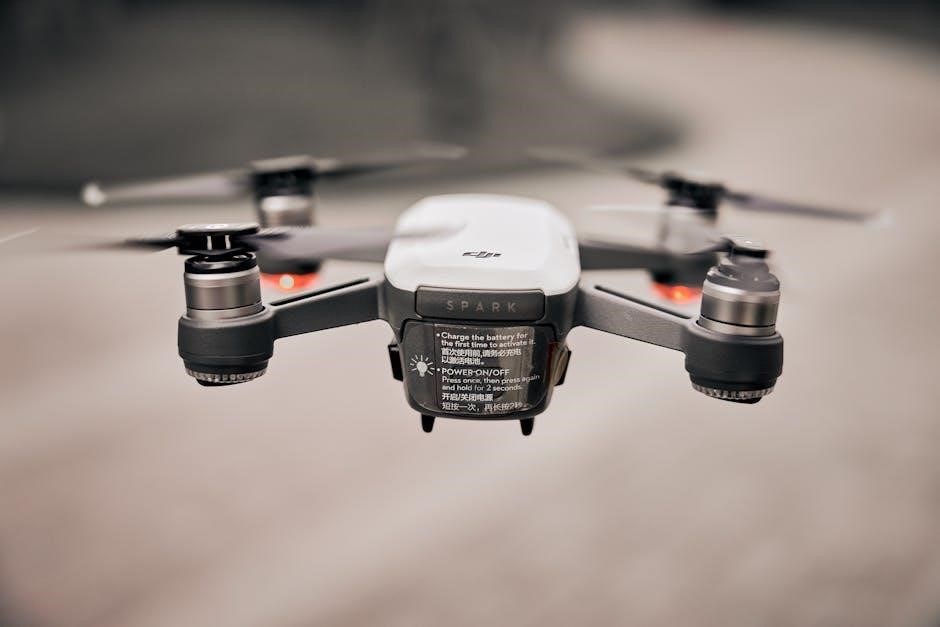savvy vape battery instructions
Understanding vape battery usage is crucial for safety and efficiency. Proper handling, charging, and maintenance ensure optimal performance and longevity. Learn key tips to maximize your vaping experience.
Safety Precautions
Always use compatible chargers, avoid overcharging, and handle batteries carefully to prevent damage or hazards. Proper storage and adherence to manufacturer guidelines ensure safe vaping experiences.
2.1 Choosing the Right Battery
Choosing the right battery for your vape device is essential for performance and safety. Ensure the battery is compatible with your vape mod or pod system. Opt for high-quality, reputable brands to avoid potential risks. Check the mAh rating to match your vaping habits—higher mAh means longer battery life. Consider the type of vaping you prefer: sub-ohm or mouth-to-lung, as this affects battery requirements. Always verify the battery’s voltage and current ratings to ensure they align with your device. Avoid mixing old and new batteries or using damaged ones, as this can lead to safety issues. Lastly, consult reviews or expert recommendations to find the best battery for your needs.
2.2 Handling and Storage Tips
Proper handling and storage of vape batteries are vital for safety and longevity. Always handle batteries with care to avoid physical damage or stress. Store batteries in a cool, dry place, away from direct sunlight or extreme temperatures. Use protective cases or covers to prevent accidental activation or contact with metal objects, which can cause short circuits. Avoid storing batteries in pockets or bags without protection. Keep batteries away from children and pets. Never leave charging batteries unattended. If a battery is damaged, stop using it immediately. For long-term storage, charge batteries to about 50% capacity to prevent over-discharge. Regularly inspect batteries for signs of wear or degradation, such as dents, rust, or bulging. Proper storage and handling practices ensure reliable performance and reduce safety risks.
Understanding Battery Types
Vape batteries come in various types, including Li-ion, alkaline, and NiMH. Each has unique characteristics, such as energy density, lifespan, and safety features, tailored for specific devices.
3.1 Overview of Common Battery Types
Vape batteries come in several types, each designed for specific vaping needs. The most common are Lithium-Ion (Li-ion) batteries, known for their high energy density and long lifespan, making them ideal for advanced vaping devices. Nickel-Metal Hydride (NiMH) batteries are another option, offering reliability and durability, though they are less common in modern vapes. Alkaline batteries are rarely used for vaping due to their lower energy output but are found in some basic devices. Each type has unique characteristics, such as voltage, capacity, and charging requirements, making it essential to choose the right one for your device. Understanding these differences ensures safer and more efficient vaping experiences.
3.2 Li-ion vs. Alkaline Batteries
When comparing Lithium-Ion (Li-ion) and Alkaline batteries for vaping, key differences emerge. Li-ion batteries are preferred for their high energy density, longer lifespan, and compatibility with advanced vaping devices. They support features like variable voltage and wattage, making them ideal for modern vapes. Alkaline batteries, while less common, offer reliability and safety in basic devices. They have lower energy output but are easier to charge and maintain. Choosing between them depends on your vaping needs, with Li-ion being the better choice for performance and Alkaline for simplicity and safety. Understanding these differences helps in selecting the right battery for your device, ensuring optimal performance and safety.
Charging Best Practices
Always use a high-quality charger designed for vape batteries. Avoid overcharging, as it can degrade battery health. Monitor charge levels and ensure the device is on a stable surface while charging. Optimal charging practices enhance safety, performance, and battery longevity.
4.1 Recommended Chargers for Vape Batteries
When charging your vape battery, use a high-quality charger specifically designed for lithium-ion (Li-ion) batteries. Ensure the charger is compatible with your battery’s voltage and capacity. USB chargers with overcharge protection are ideal for safe and efficient charging. Avoid using low-quality or generic chargers, as they may damage your battery. Always follow the manufacturer’s instructions for charging times and methods. For added convenience, consider using a wall adapter or car charger with built-in safety features. Look for chargers with LED indicators to monitor the charging status. Investing in a reliable charger ensures optimal performance, extends battery life, and enhances overall vaping safety. Prioritize brands known for producing durable and safe charging solutions.
4.2 Avoiding Overcharging
Overcharging is a common mistake that can significantly reduce your vape battery’s lifespan. Always monitor your battery while it’s charging and avoid leaving it plugged in overnight. Use a charger with overcharge protection to prevent this issue. Most modern vape batteries and chargers have built-in safety features that stop charging once the battery is full. However, it’s still important to keep an eye on the charging time. A fully charged battery typically takes 2-4 hours, depending on its capacity. If you notice your battery getting hot during charging, unplug it immediately. Overcharging can cause the battery to degrade faster, lose capacity, and even pose a safety risk. By being mindful of your charging habits, you can maintain your battery’s health and performance.

Optimizing Battery Life
To extend your vape battery’s lifespan, ensure proper charging, avoid extreme temperatures, and maintain a consistent usage pattern; Regular maintenance and storage can significantly enhance performance and longevity.
5.1 Usage Tips for Longer Life
For a longer-lasting vape battery, adopt smarter usage habits. Avoid over-discharging; keep the battery level between 20% and 80% if possible. Refrain from using your device continuously for extended periods, as this can cause overheating. Clean the terminals regularly to prevent connection issues. Store batteries away from direct sunlight and moisture. Additionally, avoid using your vape in extremely hot or cold environments, as this can strain the battery. By following these guidelines, you can significantly extend the lifespan of your vape battery and ensure consistent performance over time.
5.2 Maintenance Habits
Regular maintenance is key to preserving your vape battery’s health. Start by cleaning the terminals with a soft cloth or cotton swab to remove dirt and residue, ensuring a stable connection. Check batteries for signs of wear, such as dents or torn wrappers, and replace them immediately if damaged. Use the charger specifically designed for your battery type to avoid compatibility issues. Avoid fast charging unless necessary, as it can degrade the battery over time. Store batteries in a protective case when not in use to prevent accidental activation. Finally, keep your battery away from extreme temperatures and update your device’s firmware regularly for optimized performance. These habits will help maintain your battery’s reliability and extend its lifespan.

Common Mistakes to Avoid
Avoiding common mistakes is essential for safe and efficient vape battery use. One of the most frequent errors is using the wrong charger, which can damage the battery or cause overheating. Mixing different battery brands or models can also lead to inconsistent performance. Overcharging is another mistake to avoid, as it can degrade the battery’s capacity over time. Additionally, neglecting to inspect the battery wrap for tears or dents can pose safety risks. Using a battery with incorrect resistance for your device is another common oversight, potentially leading to malfunction or reduced vapor quality. Lastly, ignoring proper storage practices, such as leaving batteries loose in a bag, can cause accidental discharge or damage. Being mindful of these pitfalls ensures a safer and more enjoyable vaping experience.

Troubleshooting Battery Issues
If your vape battery isn’t performing well, start by checking the charge level. A dead battery may simply need recharging. Ensure the charger and cable are functioning properly. If the battery still doesn’t turn on, it might be faulty and require replacement. For a battery that doesn’t hold charge, avoid overcharging and use the correct charger. Over time, batteries degrade, so replacing them periodically is necessary. If the device doesn’t produce vapor, check the battery-cartridge connection for cleanliness and tightness. Clean or replace the cartridge if empty or clogged. Address overheating by allowing the device to cool and using the appropriate charger. Lastly, replace any leaking or damaged batteries immediately for safety.

Extending Battery Duration
To extend your vape battery’s duration, adopt mindful usage habits. Avoid deep discharges by charging when the battery level drops to 20%. Use power-saving features like lower wattage settings. Store batteries away from extreme temperatures to prevent degradation. Regularly clean the terminals to ensure proper connection. Avoid overcharging by using timers or smart chargers. If not in use, store batteries with a 50% charge. Replace aging batteries as they naturally lose capacity over time. Consider upgrading to high-quality, high-mAh batteries for longer sessions. By following these tips, you can maximize your battery’s lifespan and enjoy uninterrupted vaping experiences.

Signs of Battery Degradation
Identifying signs of battery degradation is essential for maintaining safety and performance. A degraded battery may show reduced capacity, longer charging times, or inconsistent power delivery. Look for visible signs like swelling, dents, or peeling of the battery wrap. Increased heat during use or charging is another indicator. If your device frequently shuts off or struggles to maintain vapor production, it may signal worn-out cells. Over time, Li-ion batteries naturally lose their ability to hold a charge. Addressing these issues promptly prevents potential safety hazards. Replace batteries showing significant degradation to ensure reliable and safe vaping experiences. Regular monitoring can help you identify when it’s time for a replacement.
Environmental Considerations
Proper disposal and recycling of vape batteries are crucial for environmental protection. Lithium-ion batteries contain hazardous materials like lithium, cobalt, and nickel, which can harm the environment if not disposed of correctly. Always follow local regulations for battery recycling to prevent contamination of soil and water. Additionally, consider the carbon footprint of manufacturing and shipping batteries. Opting for rechargeable batteries and energy-efficient chargers can reduce waste. Many communities offer designated drop-off points for e-waste, ensuring safe processing. By adopting eco-friendly practices, vapers can contribute to a healthier planet. Avoid tossing batteries in regular trash to prevent landfill contamination. Support brands that prioritize sustainability and recyclable materials. Responsible battery management is key to minimizing environmental impact while maintaining safety and performance.

Choosing the Right Charger
Selecting the right charger for your vape battery is essential for safety and performance. Always use a charger compatible with your battery type, as specified by the manufacturer. Look for chargers with safety features like overcharge protection, short-circuit prevention, and temperature control. Ensure the charger has good reviews and certifications from reputable organizations. Avoid using low-quality or counterfeit chargers, as they can damage your battery or pose fire hazards. Choose a charger with multiple voltage settings to accommodate different battery types. If you’re unsure, opt for a universal charger designed for vape batteries. Never use a charger that feels hot or malfunctioning, as this can lead to accidents. Prioritize reliability and safety when selecting a charger to protect your device and ensure optimal charging.

Understanding mAh Ratings
mAh, or milliampere-hour, is a unit of electric charge that measures a battery’s capacity. It indicates how much energy a battery can store and deliver over time. A higher mAh rating means the battery can power your vape device for longer before needing a recharge. For example, a 2000mAh battery will last longer than a 1000mAh one under the same conditions. However, mAh alone doesn’t determine battery performance, as voltage, resistance, and usage patterns also play a role. Always ensure the mAh rating matches your vaping needs—higher ratings are better for heavy users, while lower ratings suffice for casual use. Understanding mAh helps you choose the right battery for your device and vaping style.

Monitoring Battery Health
Monitoring your vape battery’s health ensures safety and optimal performance. Look for signs of degradation, such as reduced battery life or slower charging. Use a battery tester to check voltage and internal resistance. Over time, Li-ion batteries naturally lose capacity. If your battery no longer holds a charge or shows physical damage, replace it. Avoid extreme temperatures, as they can accelerate degradation. Regularly inspect for swelling, dents, or leaks. Always follow the manufacturer’s guidelines for charging and storage. By monitoring battery health, you can prevent issues and extend its lifespan, ensuring reliable performance and safety in your vaping experience.

Impact of Vaping Habits on Battery Life
Your vaping habits significantly influence battery longevity. Frequent use, high power settings, and prolonged sessions can drain the battery faster. Continuous vaping without breaks strains the battery, reducing its lifespan. Using features like variable voltage or wattage can also impact battery health if not managed properly. Additionally, chain vaping or drawing excessively can overheat the battery, leading to degradation. To extend battery life, adopt moderate vaping habits and avoid extreme power levels. Regular breaks allow the battery to cool, preserving its capacity. By adjusting your vaping style and settings, you can ensure your battery performs optimally and lasts longer, enhancing your overall vaping experience while maintaining safety and efficiency.
When to Replace Your Vape Battery
Knowing when to replace your vape battery is essential for safety and performance. Signs of degradation include a noticeable reduction in battery life, longer charging times, and physical wear like dents or rust. If your battery no longer holds a charge or overheats frequently, it’s time to replace it. Avoid waiting until the battery fails completely, as this can lead to safety hazards. Typically, vape batteries should be replaced every 6 to 12 months, depending on usage. Regular monitoring of your battery’s condition ensures optimal vaping experiences and prevents potential risks. Replace your battery promptly when these signs appear to maintain reliability and safety.


